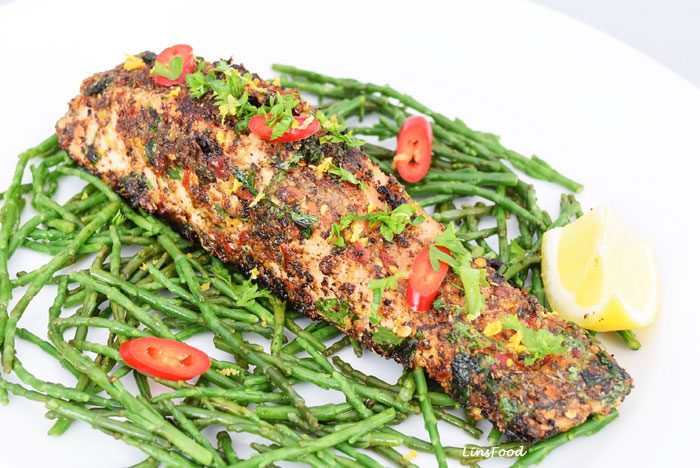Samphire is a spindly plant that grows on rocks and in marshes in coastal areas and by that association, is naturally salty.
Estimated reading time: 2 minutes

Half-way down
Shakespeare, mentioning Samphire in King Lear.
Hangs one that gathers samphire; dreadful trade! (Act IV, Scene VI)
Samphire is also known as glasswort from the days when it was used to make soda glass, as well as the more romantic mermaid’s kisses.
It has grown in popularity over the last few years here in the UK and is very easily available in markets, fish stalls and large supermarkets. Doing it yourself, if you’re ever lucky enough to come across them, is a very muddy job, so I reckon it’s best to leave it to the experts!
How to use Samphire
I love to eat it lightly steamed or sautéed and it makes the ideal accompaniment to fish dishes.
It’s also great tossed in salads as it lends a natural flavour to the other vegetables.
Best way to sauté it is just with a touch of butter or olive oil and some freshly ground black pepper to finish off.
I use it in this quick recipe:

Types of Samphire
There are 2 distinct types of samphires, rock and marsh, with the latter (Salicornia europaea), being the one sold everywhere as the rock samphire apparently isn’t very pleasant, smell or taste wise.

